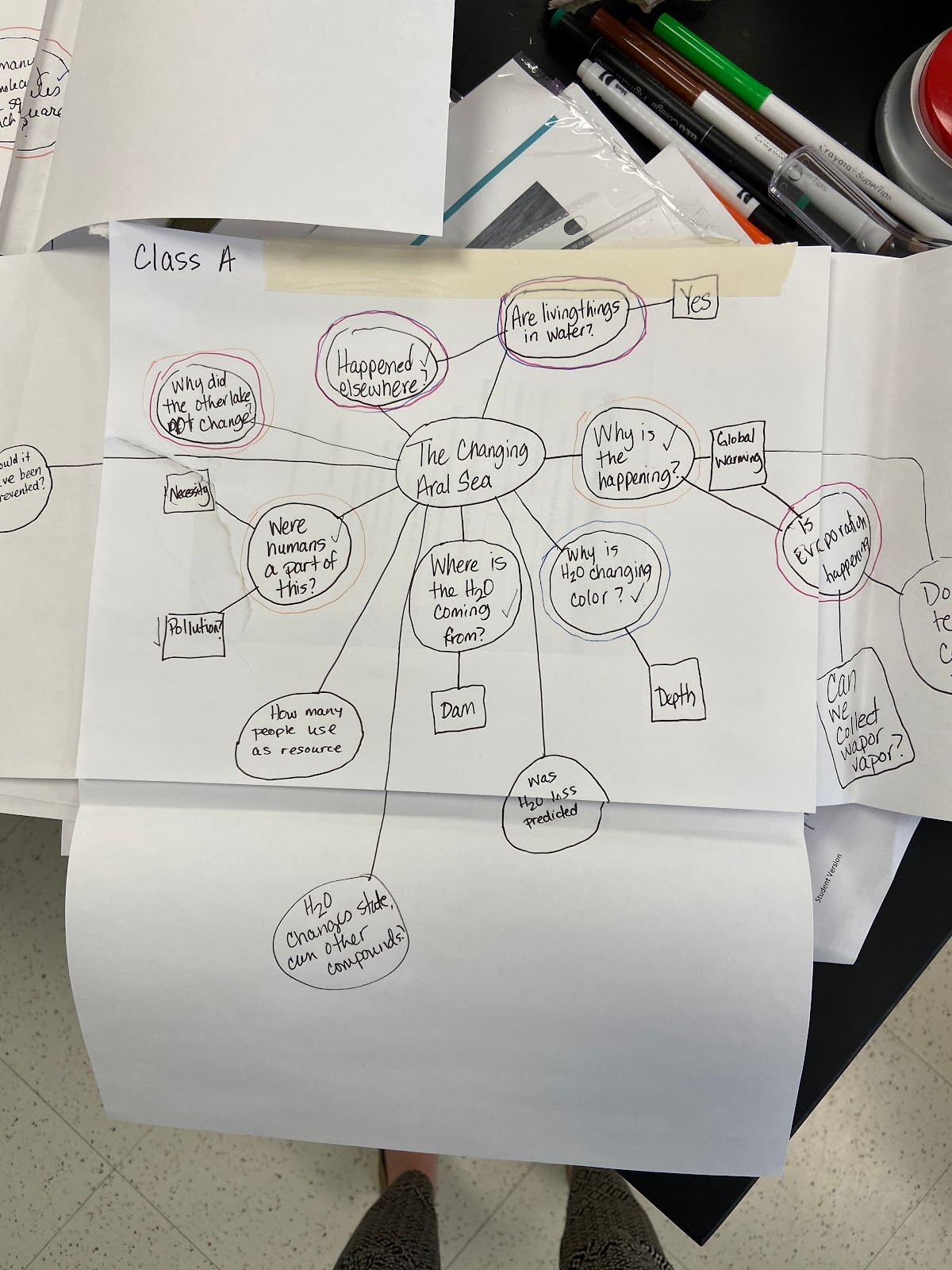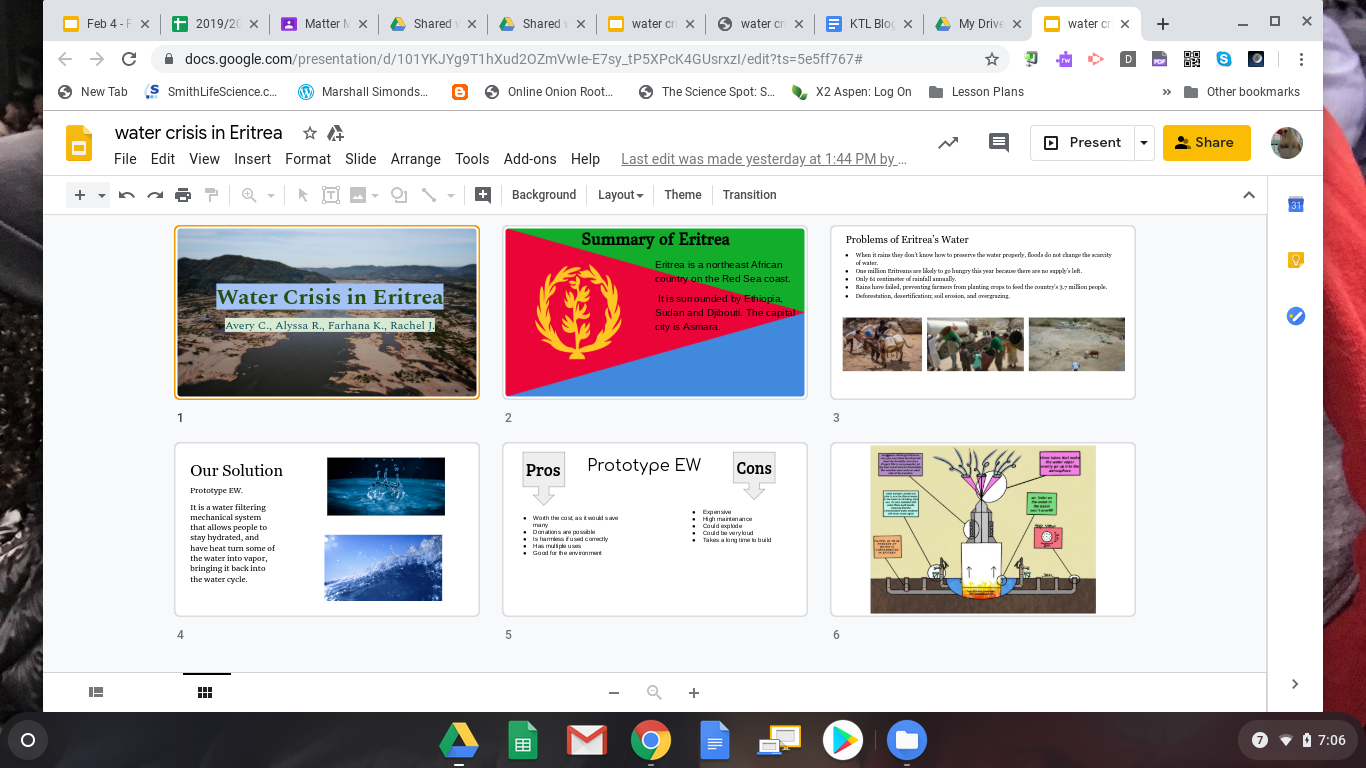Tammy Scelsi
MSMS
Grade 7
ScienceA challenge that I face as a science teacher is deciding how to implement new initiatives, but also to stay consistent with the things that I know work for students. For example, in science the new NGSS standards and phenomenon based teaching practices have been introduced this year. I also participated in a book study about the universal design for learning, which focuses on empowering students in their own learning. These are all great, but I am a KTL coach and I want to stay focused on developing literacy too. The key is in finding ways to implement the KTL strategies into the new curriculum designed to shift focus away from teacher-driven lessons.
Ideally finding resources that can lend themselves to all, or at least most, of it would be important. Stanford University and NGSS created an integrated curriculum unit that “fit the bill.” We just completed a unit entitled “Matter Matters” in which the students learned about water scarcity issues facing the planet. The unit started with a phenomenon and required that the students generate guiding questions. We created a class concept map for these questions.

We used our Bloom’s question prompts from Keys to help write the guiding questions.
Each task in the unit ended with a summary of what was learned in a two-column note format.

Throughout the unit the students were working on vocabulary - previewing in quick writes (the 1, 2, 3, 4 method) and defining other words that were more critical to the understanding of the unit. We kept a running list of new vocabulary that was covered in each task. We revisited Bloom’s with additional questions at the end of each task. We also worked on our summarizing skills using main ideas and transition words from various reading material throughout the unit.
The final task for students required that they consider a specific location on the Earth that has a water shortage and devise a method for solving the problem. Students were given a few options for their solutions. In keeping with UDL principles they were given freedom in choosing their location, devising their own solutions, and deciding how they would present their information. For example, some groups created mechanical solutions and shared those ideas with their classmates in a Google Slides presentation (one example shown below), while other groups created public service announcements, posters (shown below) or used iMovie to create videos.



Students were also tasked with using their two-column notes to write a four paragraph digital article about the importance of water, the different states of matter and the positive and negative aspects of their proposed solution. In the end, this particular unit ended up being a good link between the Keys to Literacy strategies that I find so valuable and the new methods that are being used to teach science. The best part - there was no need to “recreate the wheel!”